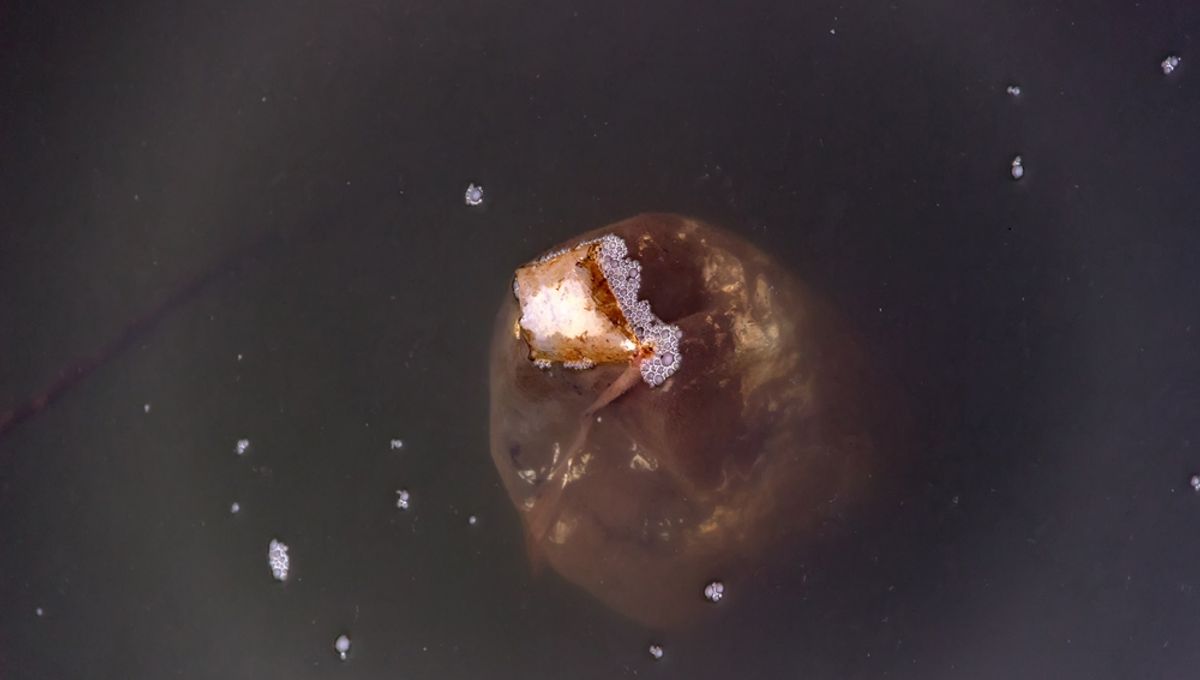
Over the last few years, there have been increasingly worrying reports about the toxic impacts so called “forever” chemicals are having on our health and the wider environment. It’s hard stuff to swallow, but now there is a little glimmer of light in this worrying story. Researchers have developed a solution that removes these substances from water and then transforms it into valuable graphene.
“Forever chemicals” are the common name for per- and polyfluorinated alkyl substances (PFAS), which are a group of synthetic compounds that are found in many common household items. Ever since the 1950s, these compounds have been celebrated for their water and stain-resistant properties. As such, they have been used as coatings in countless objects, including pots and pans, clothing, adhesives, food packaging, cooking surfaces, furniture, electrical wiring and even firefighting foams. They are also found in supposedly biodegradable objects, such as paper straws.
PFAS have earned their common name from their long-lasting presence in the environment and the bodies of organisms that consume them – essentially, PFAS don’t naturally break down, which means they can linger for centuries after their use. Increasingly, scientists are becoming aware of the dangers these forever chemicals pose to human bodies as they have been linked to various adverse health outcomes, including cancer and immune system disruptions.
As you can imagine, the growing awareness of these issues is prompting a greater need to deal with them, but traditional methods of PFAs disposal are costly and energy-intensive. They also usually create secondary pollutants as byproducts. However, researchers at Rice University, Houston, Texas, have developed a new method that overcomes these issues.
“Our method doesn’t just destroy these hazardous chemicals; it turns waste into something of value,” James Tour, the T.T. and W.F. Chao Professor of Chemistry and professor of materials science and nanoengineering explained in a statement.
“By upcycling the spent carbon into graphene, we’ve created a process that’s not only environmentally beneficial but also economically viable, helping to offset the costs of remediation.”
Tour, graduate student Phelecia Scotland, and colleagues used flash joule heating (FJH) in their innovative approach. They combined granular activated carbon (GAC) saturated with PFAS and mineralizing agents, such as sodium and calcium salts, which they then zapped with a high voltage to produce temperatures of over 3,000 degrees Celsius (5432 Fahrenheit) in less than a second. The intense heat breaks down the stable carbon-fluorine bonds in the forever chemicals, converting them into inert and nontoxic fluoride salts. At the same time, the GAC is upcycled into graphene, a highly valued material used in electronics and construction.
According to the researchers, their technique yielded more than 96 percent defluorination efficiency and 99.98 percent removal of perfluorooctanoic acid (PFOA), one of the most common PFAS pollutants.
Importantly, tests confirmed that the process produced undetectable amounts of volatile organic fluorides, which are the common harmful byproducts created in traditional PFAS treatments. The reaction also seems to eliminate the secondary wastes associated with traditional disposal methods such as incineration or adding spent carbon to landfills.
“This dual-purpose approach is a game changer,” Scotland added. “It transforms waste into a resource while providing a scalable, cost-effective solution to an urgent environmental issue.”
The new approach could have significant implications for dealing with toxic forever chemicals, extending beyond the treatment of PFOA and perfluorooctane sulfonic acid – the two most studied PFAS. The technique even works on the most difficult PFAS types – Teflon R. The high temperatures produced by the method could degrade a wide range of these chemicals, offering new solutions to water treatment and waste disposal.
In addition, the FJH approach can also be tailored to produce other valuable materials, such as carbon nanotubes and nanodiamonds, adding to its versatility and economic strength.
“With its promise of zero net cost, scalability and environmental benefits, our method represents a step forward in the fight against forever chemicals,” Scotland explained. “As concerns over PFAS contamination continue to grow, this breakthrough offers hope for safeguarding water quality and protecting public health worldwide.”
The paper is published in Nature Water.
Source Link: Scientists Pioneer New Way To Transform Toxic "Forever Chemicals" Into Valuable Material